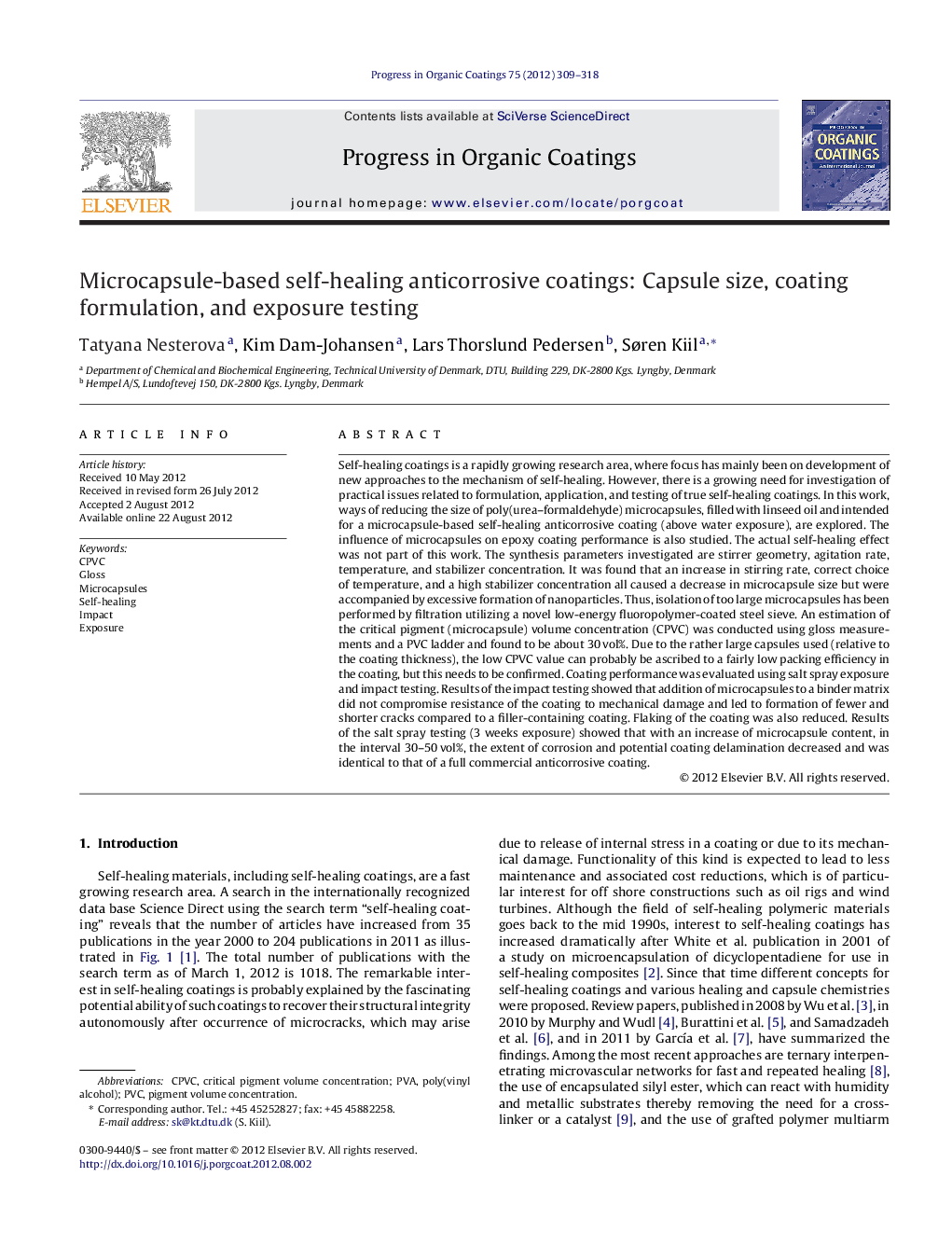| Article ID | Journal | Published Year | Pages | File Type |
|---|---|---|---|---|
| 692932 | Progress in Organic Coatings | 2012 | 10 Pages |
Self-healing coatings is a rapidly growing research area, where focus has mainly been on development of new approaches to the mechanism of self-healing. However, there is a growing need for investigation of practical issues related to formulation, application, and testing of true self-healing coatings. In this work, ways of reducing the size of poly(urea–formaldehyde) microcapsules, filled with linseed oil and intended for a microcapsule-based self-healing anticorrosive coating (above water exposure), are explored. The influence of microcapsules on epoxy coating performance is also studied. The actual self-healing effect was not part of this work. The synthesis parameters investigated are stirrer geometry, agitation rate, temperature, and stabilizer concentration. It was found that an increase in stirring rate, correct choice of temperature, and a high stabilizer concentration all caused a decrease in microcapsule size but were accompanied by excessive formation of nanoparticles. Thus, isolation of too large microcapsules has been performed by filtration utilizing a novel low-energy fluoropolymer-coated steel sieve. An estimation of the critical pigment (microcapsule) volume concentration (CPVC) was conducted using gloss measurements and a PVC ladder and found to be about 30 vol%. Due to the rather large capsules used (relative to the coating thickness), the low CPVC value can probably be ascribed to a fairly low packing efficiency in the coating, but this needs to be confirmed. Coating performance was evaluated using salt spray exposure and impact testing. Results of the impact testing showed that addition of microcapsules to a binder matrix did not compromise resistance of the coating to mechanical damage and led to formation of fewer and shorter cracks compared to a filler-containing coating. Flaking of the coating was also reduced. Results of the salt spray testing (3 weeks exposure) showed that with an increase of microcapsule content, in the interval 30–50 vol%, the extent of corrosion and potential coating delamination decreased and was identical to that of a full commercial anticorrosive coating.
► A systematic study on ways of reducing microcapsule size was performed. ► The critical pigment volume concentration (CPVC) was estimated for microcapsules. ► Salt spray and impact test of capsule-containing coatings were performed. ► Results showed that addition of capsules did not compromise coating performance.
